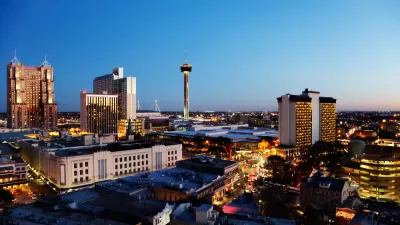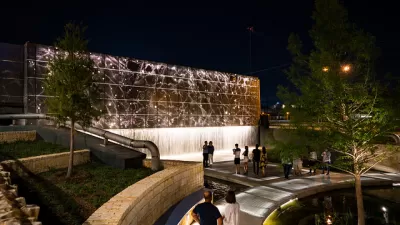Texas has come under scrutiny for a pattern of developing low-income housing projects in areas already suffering from poverty and blight. Karisa King describes how the NIMBY mentality is reinforced by the subsidization system.
A recent analysis by the Texas Tribune and The San Antonio Express News has found that subsized apartment developments have been disproportionately built in non-white areas throughout Texas. Low income housing tax credit programs are designed to break up concentrations of poverty and facilitate affordable housing in safe neighborhoods with access to jobs, good schools and transportation.
Plans to build low-income complexes in affluent neighborhoods are rarely met with open arms by existing residents. A recent proposal to build a 68-unit apartment building for low-income seniors near the fashionable neighborhood of Stone Oak was shut down after three short months of citizen outcry. President of the Mount Arrowhead Homeowners Association, Francisco Martinez, described their opposition this way:
"These are single-family homes. Anything that takes away from that takes away from why we bought into it."
It's not that developers don't understand the mission of the tax credit programs. Competition for subsidies is tight, though, and approval is based on a point system. "Community Support" is the second highest point-getter when projects are scored. Jennifer Gonzales, executive director of the Alamo Area Mutual Housing Association admits:
"Usually your more organized neighborhoods and communities are ones that have more resources, and those are the ones that are going to get organized more quickly if they don't want you there. We just don't even go there."
Thanks to Jessica Brent
FULL STORY: Low-Income Housing Effort Compels Building in Poor Areas

Americans May Be Stuck — But Why?
Americans are moving a lot less than they once did, and that is a problem. While Yoni Applebaum, in his highly-publicized article Stuck, gets the reasons badly wrong, it's still important to ask: why are we moving so much less than before?

Using Old Oil and Gas Wells for Green Energy Storage
Penn State researchers have found that repurposing abandoned oil and gas wells for geothermal-assisted compressed-air energy storage can boost efficiency, reduce environmental risks, and support clean energy and job transitions.

Placekeeping: Setting a New Precedent for City Planners
How a preservation-based approach to redevelopment and urban design can prevent displacement and honor legacy communities.

San Francisco’s Muni Ridership Grew in 2024
The system saw its highest ridership since before the Covid-19 pandemic, but faces a severe budget shortage in the coming year.

Colorado Lawmakers Move to Protect BRT Funding
In the face of potential federal funding cuts, CDOT leaders reasserted their commitment to planned bus rapid transit projects.

Safe Streets Funding in Jeopardy
The Trump administration is specifically targeting bike infrastructure and other road safety projects in its funding cuts.
Urban Design for Planners 1: Software Tools
This six-course series explores essential urban design concepts using open source software and equips planners with the tools they need to participate fully in the urban design process.
Planning for Universal Design
Learn the tools for implementing Universal Design in planning regulations.
Heyer Gruel & Associates PA
City of Moreno Valley
Institute for Housing and Urban Development Studies (IHS)
City of Grandview
Harvard GSD Executive Education
Salt Lake City
NYU Wagner Graduate School of Public Service
City of Cambridge, Maryland





























